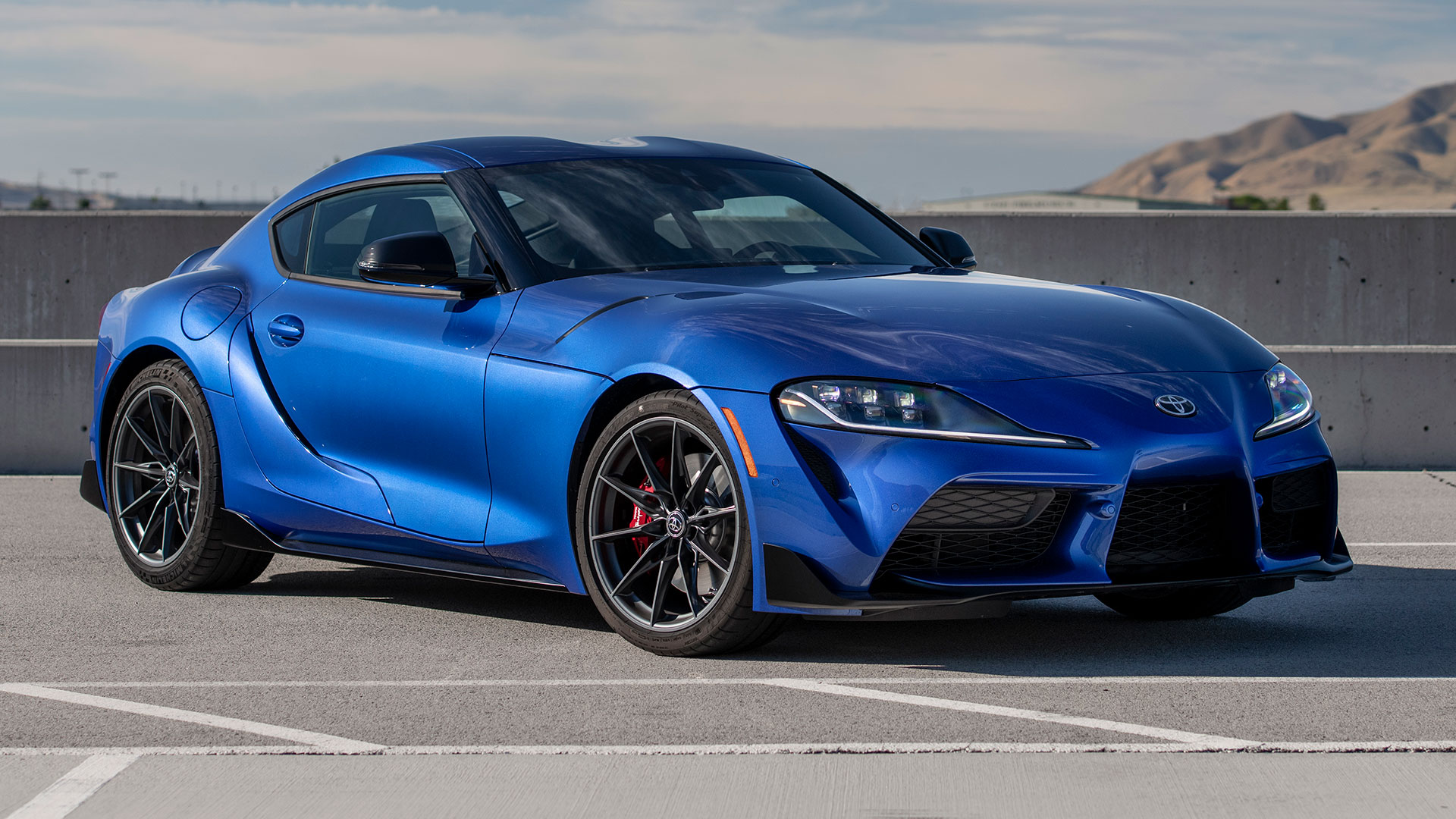2023 Toyota GR Supra MT
Exactly What The Supra Needed
We were thrilled when Toyota brought the Supra sport coupe back, and even more ecstatic to find out it truly delivered the high-performance goods. And much like the original, Toyota has been making regular enhancements to keep the good times rolling. So, time now to hit the track in the updated Supra and update ourselves on all the fun.
The Toyota Supra, in its reborn GR Supra form, has been on the scene for just 3-years, but already it has cemented its place as a leader among the current crop of sporting coupes. For 2023, the long rumored manual transmission has arrived, along with a few other updates that are sure to make its case even more solid.
The Supra’s new 6-speed comes from ZF but has been heavily modified for the Supra, and is only available with the 6-cylinder engine. That 3.0-liter inline-6 turbo is BMW-sourced of course, though output has increased from its initial 335-horsepower, to 382-horsepower, and 368 lb-ft. of torque, or almost identical to the automatic-only BMW Z4. And, as we found out at Savannah’s Roebling Road Raceway, Toyota has done much more than just drop in a new manual transmission and call it a day.
The double-joint McPherson strut front and multi-link rear suspensions have been retuned for all ’23 Supras with upgraded shocks designed to further minimize roll without adversely affecting handling. Brembo-based brake hardware is the same as before, but the control system has been recalibrated. They had great initial bite and helped us well throughout our track days. Drive modes are easy to dial in, and work with vehicle stability systems that have also been recalibrated. Plenty of chassis bracing is in place to tie it all together.
The shifter itself is smooth to operate and clutch action feels just right, not too heavy or too light. Integrated electronics not only allow for automatic rev matching, but also manipulate clutch engagement to maximize torque delivery. All-in-all, we’d say the manual is exactly what the Supra needed, as it makes it more fun than before; and at the end of the day, that’s what it’s all about.
There’s an active rear differential that helps the Supra put power down quite effectively out of corners; with a 3.46 ratio that’s higher than the automatic’s 3.15. It not only provides a much torquier overall feel but keeps the engine in its north of 5,000-rpm sweet spot more often. 275/55 Michelin Pilot Super Sports provided plenty of grip, perfect for minor amounts of controlled oversteer for rotating through corners. For ultra-tight low speed corners, there’s new Hairpin+ programming in the traction control that allows more wheel spin than before, plus the active rear shifts power to keep drive off strong instead of just inducing a bunch of power-on oversteer.
That upgraded rear partially helps negate the pause for shifting during straight-line acceleration runs, taking us just 2/10ths longer to hit 60 than the automatic at 4.3-seconds. It’s an easy manual car to launch consistently, as everything has plenty of feel, yet is not too abrupt or firm for daily use. With power delivery staying consistent throughout the ¼-mile, which we finished in 12.8-seconds at 115 miles-per-hour.
 2023 Toyota GR Supra MT Dashboard | Toyota
2023 Toyota GR Supra MT Dashboard | Toyota
Some changes have taken place inside, as the center console has been reconfigured to house the shifter, moving the iDrive-like controller to the right a bit. And just because you’re tasked with shifting gears doesn’t mean you have to give up any amenities, as Premium trim is still available with great leather seats, Head-Up display, and 12-speaker JBL premium audio.
Nothing changes outside, with the exception of this new Stratosphere Blue paint option. Same low-slung swooping body panels as before, draped over 19-inch forged aluminum wheels with red Brembo brake calipers behind. We’re glad they’ve resisted the urge to throw on a bunch of gaudy graphic tacky add-ons.
Really, the only thing to carp about is fuel economy. The hardware tradeoff is significant. Government Fuel Economy Ratings drops from the automatics 23-City, 31-Highway, and 26-Combined, to 19-City, 27-Highway, and 21-Combined. That’s a worse than average Energy Impact Score, using 14.2-barrels of oil yearly with CO2 emissions of 6.8-tons.
Since the manual transmission is not available with the standard 2.0-liter engine, it’s not the bargain option; but at least it won’t cost you any more than the automatic, as both start at $54,095; Premium trim at $57,245.
It almost seems odd to even say that such a simple thing as a step backwards in technology could have such a huge positive impact on the 2023 Toyota GR Supra. But it only takes one drop of truffle oil to inject some huge flavor into whatever it is you’re cooking, and if you plan on cooking your way through a few track days, why not show up with the best ingredients possible for having a rip-roaring good time in the Toyota GR Supra.
Specifications
- Engine: 3.0L I-6 turbo
- Torque: 368 lb-ft.
- 1/4 Mile: 12.8 seconds at 115 mph
- Horsepower: 382
- 0-60 mph: 4.3 seconds
- EPA: 19 City / 27 Highway / 21 Combined









